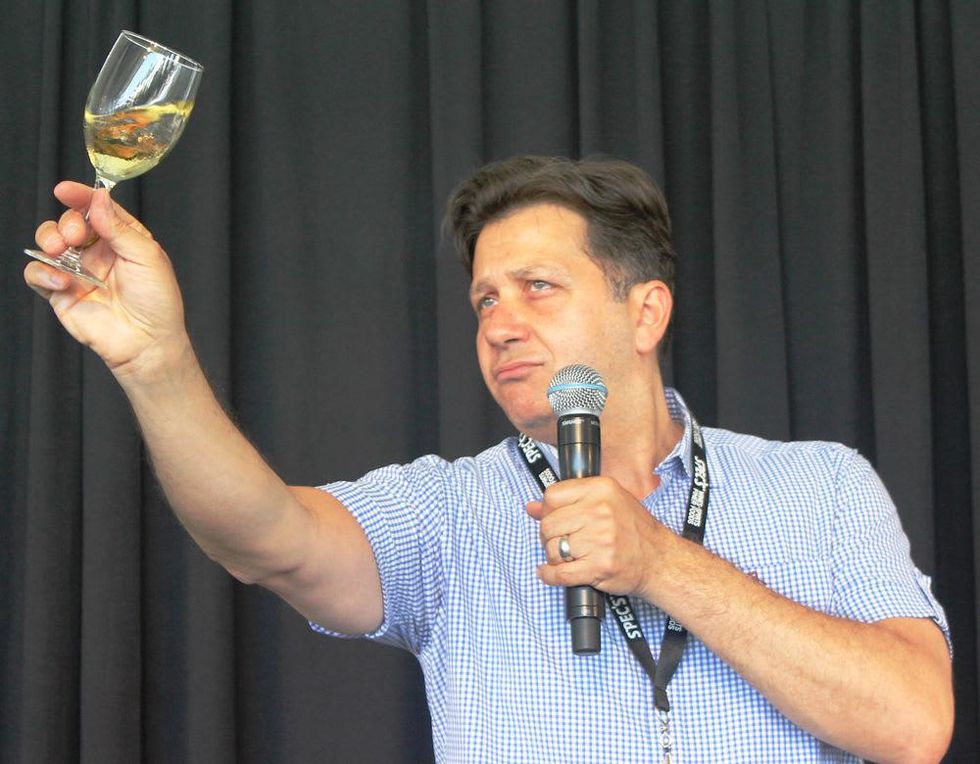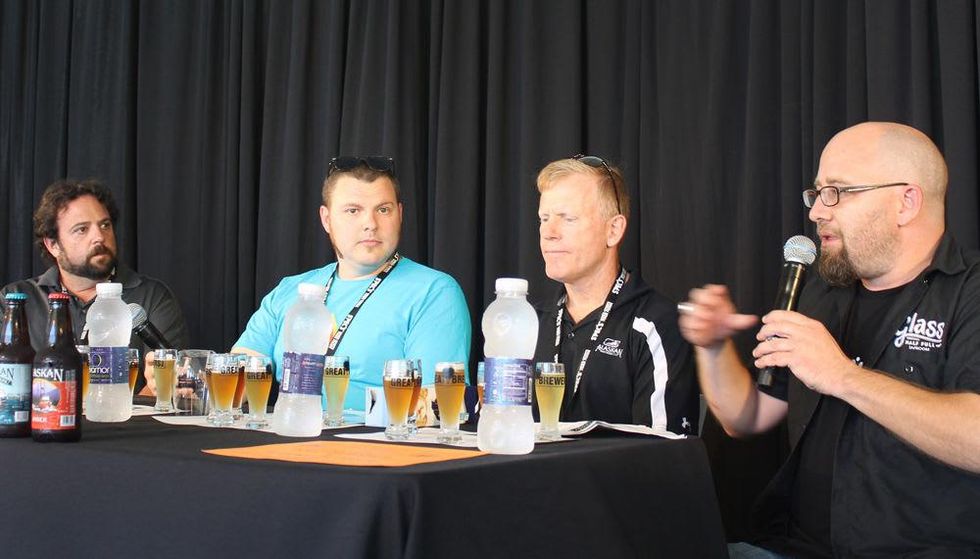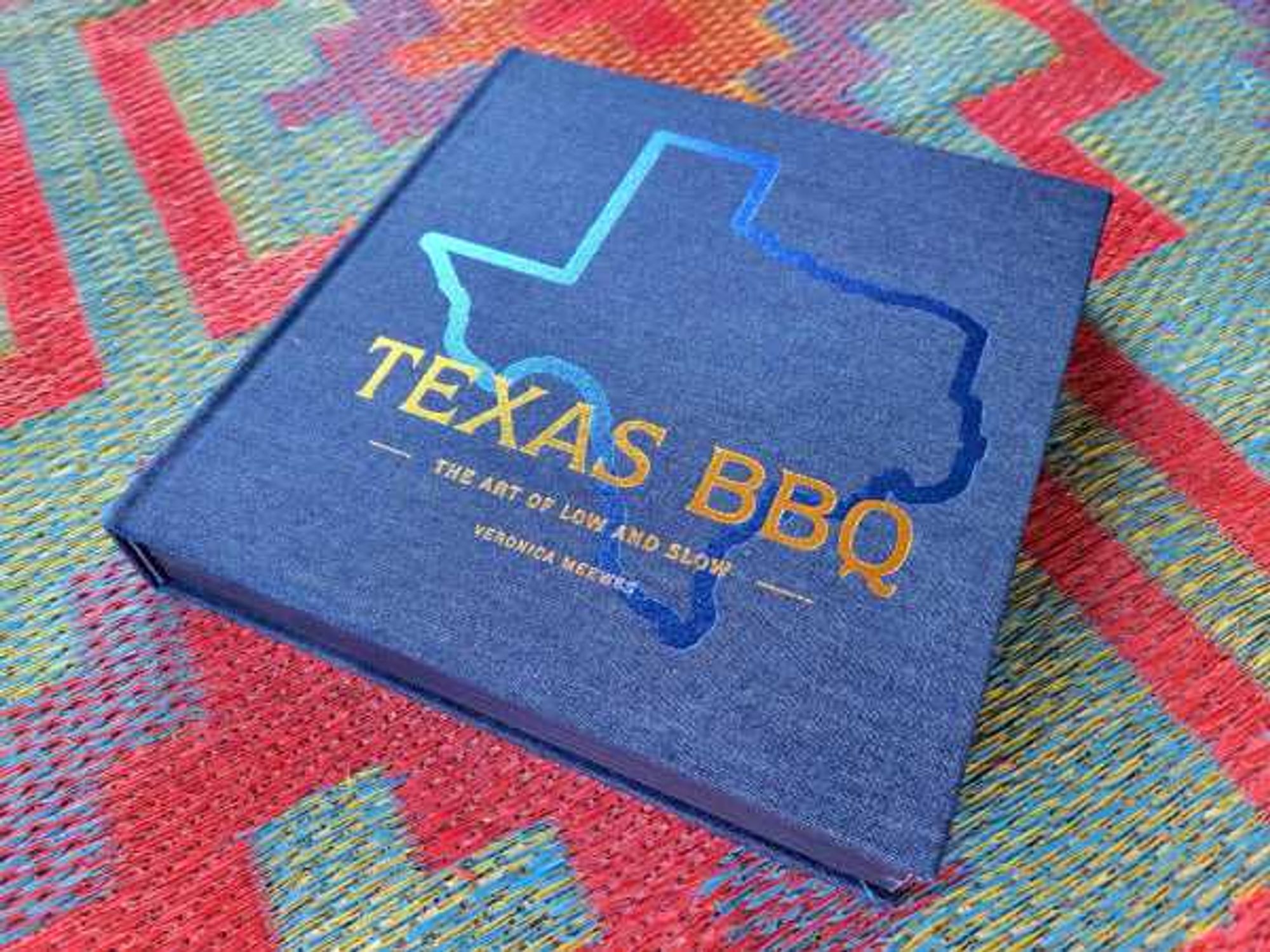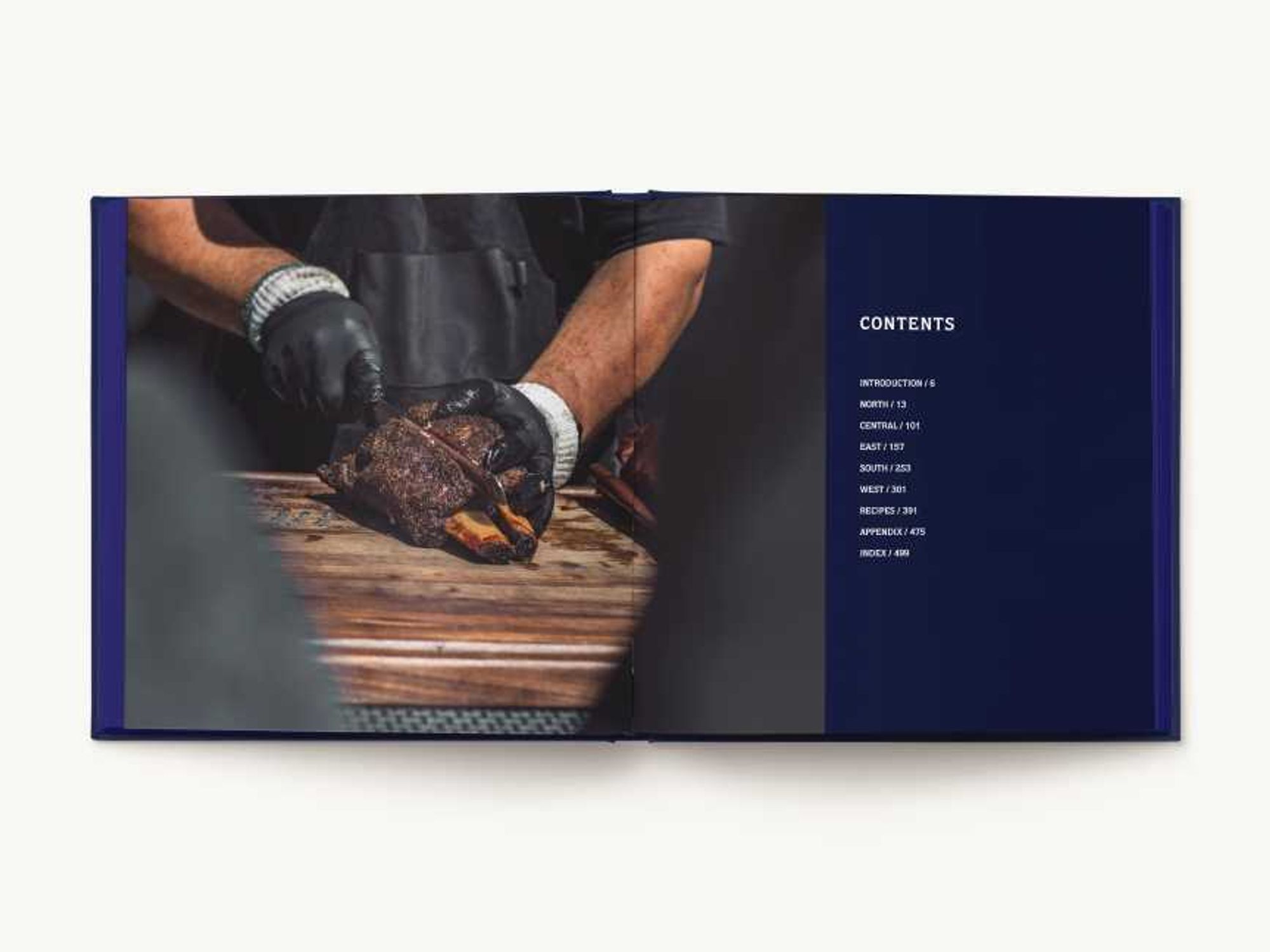Drink up
French underdog wines and craft brews from the Austin Food & Wine Festival
Flocks of men in Tommy Bahamas print shirts and women in breezy sun dresses swirled and sipped their way through Sunday at the Austin Food & Wine Festival. As wood smoke from the pits fuzzed the air, people gathered to learn the finer points about wine and beer from nationally recognized experts.
French underdogs
Dozens of people of eager wine lovers drug their hangovers into a tent the first thing Sunday morning to hear Anthony Giglio, wine correspondent for CBS News Radio, hold court in a session on lesser-known French wines. (Giglio himself was self-medicating his fragile state with a bloody Mary backstage after a night of rocking his taco.) He put on a brave face and welcomed the crowd with a hoisted wine glass, “Breakfast of champions," he said. "Who is still drunk from last night?”
There may be no finer way to start a Sunday than with a selection of six French wines. The session featured wines chosen by Giglio that are either less familiar varieties or from less popular regions. His guiding principle for picking the wines was to find ones that are not only delicious and easy to find in Texas, but are also inexpensive.
“The ‘Great Divide’ between the Old World (Europe) and New World is that we name almost all of our wines by the grape, and in Europe they almost always name wines by the region from which they hail,” said Giglio. “I thought about all the wines I love from France that are off the beaten path; the wines I recommend to friends and they say, ‘Huh? Where's that from?’ Some are usually right up front in wine shops, but others may be worth searching out. All it takes is asking questions at a wine shop or to a wine steward at a restaurant. They’re hiding in plain sight.”
Giglio instructed the crowd to taste wine in a process that he calls the “Five S's of Tasting”
1. See: Hold your glass over white paper and assess the color and weight of the wine.
2. Swirl: Spin the wine in the glass to release its perfume.
3. Sniff: Take three little sniffs to evaluate the aromas, which make up a big part of the flavor.
4. Swish: Take a small sip and swish it around your mouth. The first sip never counts as it is just waking up the mouth.
5. Sip: Try the second sip to get the full flavors of the wine.
On to the good stuff. Giglio described each of the wines in the flight as the crowd hung on his words.
The first was Cameron Hughes Lot 353 Saint Péray Blanc, a blend of Sauvignon Blanc, Muscadet, Semillon from the Northern Rhone Valley. Giglio quipped that Sauvignon Blanc often smells like cat pee. “Does it taste like cat pee? I don’t know.” This $24 wine was light and refreshing with green apple and grapefruit light flavors.
Next up, Chateau de la Chaize Brouilly Cru Beaujolais, a gorgeous Gamay from one of Beaujolais' 10 cru villages. While Beaujolais is widely known for the unsophisticated and fruity Beaujolais Nuevo, the cru wines can be elegant and complex. This selection had bright cherry, raspberry and smoky strawberry flavors. It’s a sound value at $16 a bottle. “This will be your summer red. Trust me.”
The third wine was Jean-Luc Colombo Cotes du Rhones a blend of Grenache, Syrah and Mourvedre from the Rhone Valley. The Colombo has scents of cherries, licorice, violets and tastes of raspberry and cherry. This wine, at $12, could be a summer staple at my house. “Grenache and Syrah are my favorite grapes on the planet. They make wines that are easily drinkable with or without food.”
Moving on to another Grenache, Syrah and Mourvedre blend, this time from southern France, we tried Chateau Paul Mas Languedoc. The wine had lovely scents of cedar, dried fruit, plums and powerful blueberry, blackberry, pepper flavors. At $12 this one is my favorite of the flight. I'll definitely seek this one out.
Next we tasted Chateau Greysac Bordeaux 2008 from the most renowned region for red wine. There are five grapes allowed in Bordeaux by law and Cabernet Sauvignon is the dominant grape in the Medoc, where the Greysac is produced. It had lovely scents of eucalyptus, mint, brambly blackberry and tight, dry, black fruits flavors. “This is the best Bordeaux bargain on the planet at $14 and one of the easiest to find,” said Giglio.
The last wine, Clos la Coutale Cahors, was a Malbec, Merlot and Tannat blend from Southwest France. This crowd pleaser had fragrant chocolate covered cherries and raisin aromas and rustic black cherry and blackberry flavors.
By the end of the session, the color had returned to Giglio’s cheeks and he was clearly pleased to be in Austin. “With Austin it’s the music weaved into all of the events, whether in the background or right up front. This year we have Allen Stone, the Whiskey Shivers, Delta Spirit and DJ Mel spinning throughout," he said. "I also love that most of the events are held outside in parks, either under tents or under the stars. You can't do that everywhere, and that resonates with a city boy like me.”
For the love of beer
In the tent next door, Bill Norris, beverage director for the Alamo Drafthouse, hosted a panel of craft brewers. Adam DeBower, co-owner and brewer at Austin Beerworks; Brad Farbstein, owner of Real Ale Brewing Company; and Terry Nance, of Alaskan Brewing Company, discussed their beers and what got them into the industry.
Real Ale, one of Austin’s oldest craft breweries poured 4-Squared, a dry hopped version of its wildly popular Fireman’s Four released for 16th anniversary of the brewery, and Blonde Barleywine Ale, a dry-hopped American and English style ale that is part of the Brewers Cut series.
Norris acknowledge Real Ale’s role as one of the pioneers of the Austin craft beer industry, having started in 1996. He asked Farbstein how business has evolved since he joined the brewery in 1998.
“We have seen the level of interest in craft beer blossom in the last five to seven years and our customers’ knowledge has increased significantly. They know what they want,” said Farbstein. “Our beers were very aggressive for the market in 1996. We made beers for beer drinkers. We realized a few years ago that we were still making the same beers for 15 years and the market was moving on. We have released more than eight new beers in the last three years to provide our customers with new styles. We want to stay current, hence the 4-Squared and Brewers Cut series.”
Austin Beerworks, which is celebrating its second anniversary on May 4, poured its Pearl Snap Pilz, German style lager, cold fermented European hops and Fire Eagle IPA American IPA. “This was the most successful brewery launch I’ve ever seen. You started with four beers and overnight it was in every craft brew bar in town,” said Norris.
DeBower humbly acknowledged their fast success, “I give credit to everyone that came before us and created a lot of demand for craft beer. We have four partners and who each have extensive personal networks. We drink a lot, so we have a lot of relationships with bars and restaurants.”
He credits his love for beer as the reason he entered the business. “I like to work. I like to work hard, and I don't like to get paid well. I know how to make things work on a shoe string. I used to work eight hours a day and then go to the bar and spend six hours drinking and talking about beer. I realized I didn’t want to do my day job. I just wanted to make beer,” said DeBower.
Alaskan Brewing makes its Texan brothers look downright young. The brewery, which opened in 1986 was just the 16th licensed craft brewery in the U.S. has only just ventured out of Alaska in the last 10 years. The well established northern beer outpost poured Alaskan Amber, its best selling German Alt style beer made with a gold rush recipe and Alaska Freeride APA, which brewed with Cascade, Citra and Centennial hops.
“Brewing in Alaska presents challenges. There are no roads in or out of Juneau,” said Nance. It’s also really damn cold, which can present challenges for brewing. “We generate steam to keep the brewery warm enough to ferment. We call it ‘beer powered beer.’ We use spent grain from the brewing process. We dry it and burn it in our boilers instead of fossil fuels.”
Norris turned the topic to the use of cans, which is beginning to be a more popular choice for craft brewers. Half of the beers served in the session were packaged in cans. Austin Beerworks hasn't put any beer in glass. Real Ale just installed a canning line and packages with both bottles and cans.
DeBower thinks the stigma that cans are for lower quality beers is starting to fade. “Cans protect beer better,” he said. “Light is the second worse spoiler of beer after oxygen. We need to give our beer a fighting chance by protecting it.”
Farbstein likes the flexibility that cans provide. “We chose to use cans because there was a demand for our product in areas where you can't take bottles, like the beach, the river or on a boat. It’s a keg that fits in a koozie.”




 Big photos make Texas BBQ fun to flip through.Image courtesy of HarperCollins
Big photos make Texas BBQ fun to flip through.Image courtesy of HarperCollins Author Veronica Meewes at la Barbecue.Photo by Alex Gray
Author Veronica Meewes at la Barbecue.Photo by Alex Gray